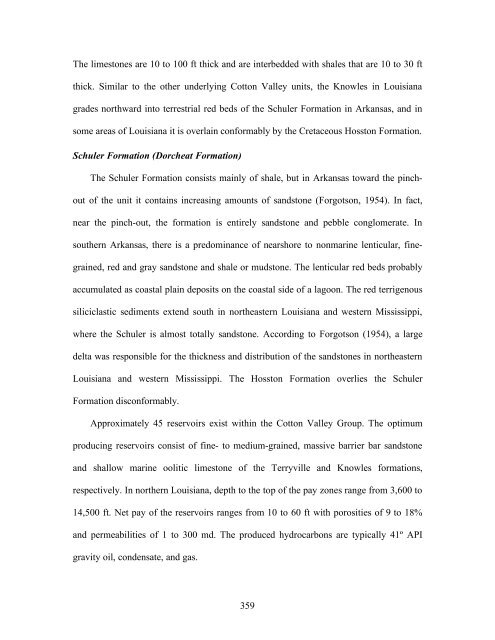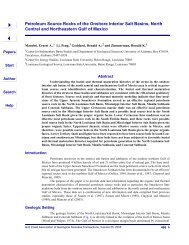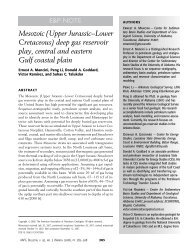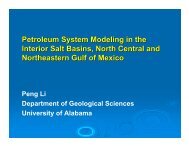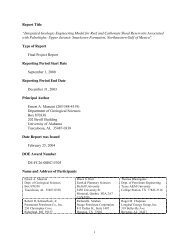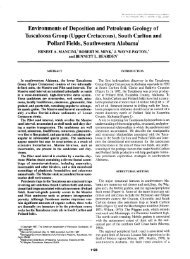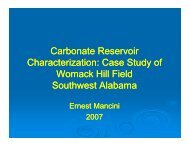Part 4 - Berg - Hughes Center
Part 4 - Berg - Hughes Center
Part 4 - Berg - Hughes Center
Create successful ePaper yourself
Turn your PDF publications into a flip-book with our unique Google optimized e-Paper software.
The limestones are 10 to 100 ft thick and are interbedded with shales that are 10 to 30 ft<br />
thick. Similar to the other underlying Cotton Valley units, the Knowles in Louisiana<br />
grades northward into terrestrial red beds of the Schuler Formation in Arkansas, and in<br />
some areas of Louisiana it is overlain conformably by the Cretaceous Hosston Formation.<br />
Schuler Formation (Dorcheat Formation)<br />
The Schuler Formation consists mainly of shale, but in Arkansas toward the pinch-<br />
out of the unit it contains increasing amounts of sandstone (Forgotson, 1954). In fact,<br />
near the pinch-out, the formation is entirely sandstone and pebble conglomerate. In<br />
southern Arkansas, there is a predominance of nearshore to nonmarine lenticular, fine-<br />
grained, red and gray sandstone and shale or mudstone. The lenticular red beds probably<br />
accumulated as coastal plain deposits on the coastal side of a lagoon. The red terrigenous<br />
siliciclastic sediments extend south in northeastern Louisiana and western Mississippi,<br />
where the Schuler is almost totally sandstone. According to Forgotson (1954), a large<br />
delta was responsible for the thickness and distribution of the sandstones in northeastern<br />
Louisiana and western Mississippi. The Hosston Formation overlies the Schuler<br />
Formation disconformably.<br />
Approximately 45 reservoirs exist within the Cotton Valley Group. The optimum<br />
producing reservoirs consist of fine- to medium-grained, massive barrier bar sandstone<br />
and shallow marine oolitic limestone of the Terryville and Knowles formations,<br />
respectively. In northern Louisiana, depth to the top of the pay zones range from 3,600 to<br />
14,500 ft. Net pay of the reservoirs ranges from 10 to 60 ft with porosities of 9 to 18%<br />
and permeabilities of 1 to 300 md. The produced hydrocarbons are typically 41º API<br />
gravity oil, condensate, and gas.<br />
359


